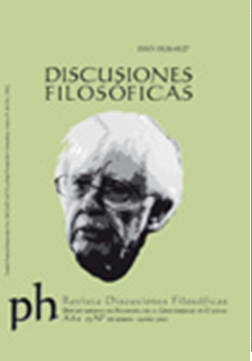Autores/as
Resumen
El objetivo del presente artículo consiste en elucidar el papel de las idealizaciones en la evolución del conocimiento matemático, inspirado por algunas ideas de la filosofía de la ciencia y de la matemática neo-kantianas de Ernst Cassirer. Usualmente, en la filosofía de la ciencia contemporánea se da por hecho que el asunto de la idealización tiene que ver únicamente con las idealizaciones en las ciencias empíricas, en particular en la física. Por contraste, Cassirer sostuvo que la idealización en las matemáticas, así como en las ciencias, tiene la misma base conceptual y epistemológica. Más precisamente examino su "tesis de la identidad" investigando una variedad de ejemplos de idealizaciones tomadas del álgebra, la topología, la teoría de redes y la geometría física. Las idealizaciones en las matemáticas, así como en el conocimiento físico, se pueden caracterizar por la introducción de elementos ideales que conducen a compleciones. En ambas áreas estos elementos ideales desempeñan esencialmente el mismo papel, es decir, sustituyen una variedad incompleta de objetos mediante una variedad conceptual completa "idealizada".
Citas
Awodey, Steve. Category theory. Oxford: Oxford University Press, 2006. Print.
Beiser, Frederick C. “Kant’s intellectual development: 1746-1781”. The Cambridge companion to Kant. Ed. Paul Guyer. Cambridge: Cambridge University Press, 1992. Print.
Cassirer, Ernst. “Kant und die moderne mathematik”. Kantstudien. 1907: 1-49. Print.
---. “Das Erkenntnisproblem in der Philosophie und Wissenschaft der neueren Zeit”. Die nachkantischen Systeme. 1920. Print.
---. The philosophy of symbolic forms. New Haven: Yale University Press, 1955. Print.
---. Substance and function & Einstein’s theory of relativity. New York: Dover, 1953. Print.
Corry, Leo. Modern algebra and the rise of mathematical structures. Vol. 17 of Science Networks. Basel: Birkhäuser Verlag, 1996. Print.
Corfield, David. Towards a philosophy of real mathematics. Cambridge: Cambridge University Press, 2003. Print.
Davey, Bryan. and Hilary A. Priestley. Introduction to lattices and order. Cambridge: Cambridge University Press, 1990. Print.
Grosholz, Emily. “Two episodes in the unification of logic and topology”. British Journal of Philosophy of Science. 1985: 147-157. Print.
Johnstone, Peter. Stone space. Cambridge: Cambridge University Press, 1982. Print.
Mac Lane, Saunders. Mathematics. Form and Function. New York and Berlin: Springer, 1986. Print.
Mormann, Thomas. “Idealization in Cassirer’s Philosophy of Mathematics”. Philosophia Mathematica. 2008: 151-181. Print.
Norton, John D. “Approximation and idealization: Why the difference Matters”. Philosophy of Science. Forthcoming.
Nowakowa, Izabella. and Leszek Nowak. “The richness of idealization”. Poznan studies in the philosophy of the sciences and the Humanities. 2000. Print.
Sieg, Wilfred and Dirk. Schlimm. “Dedekind’s analysis of number: Systems and axioms”. Synthese. 2005: 121-170. Print.
Weisberg, Michael. “Three kinds of idealization”. The Journal of Philosophy. 2007: 639-659. Print.
Whitehead, Alfred North. Process and reality: An essay in cosmology. New York: MacMillan, 1929. Print.

 PDF
PDF
 FLIP
FLIP





















